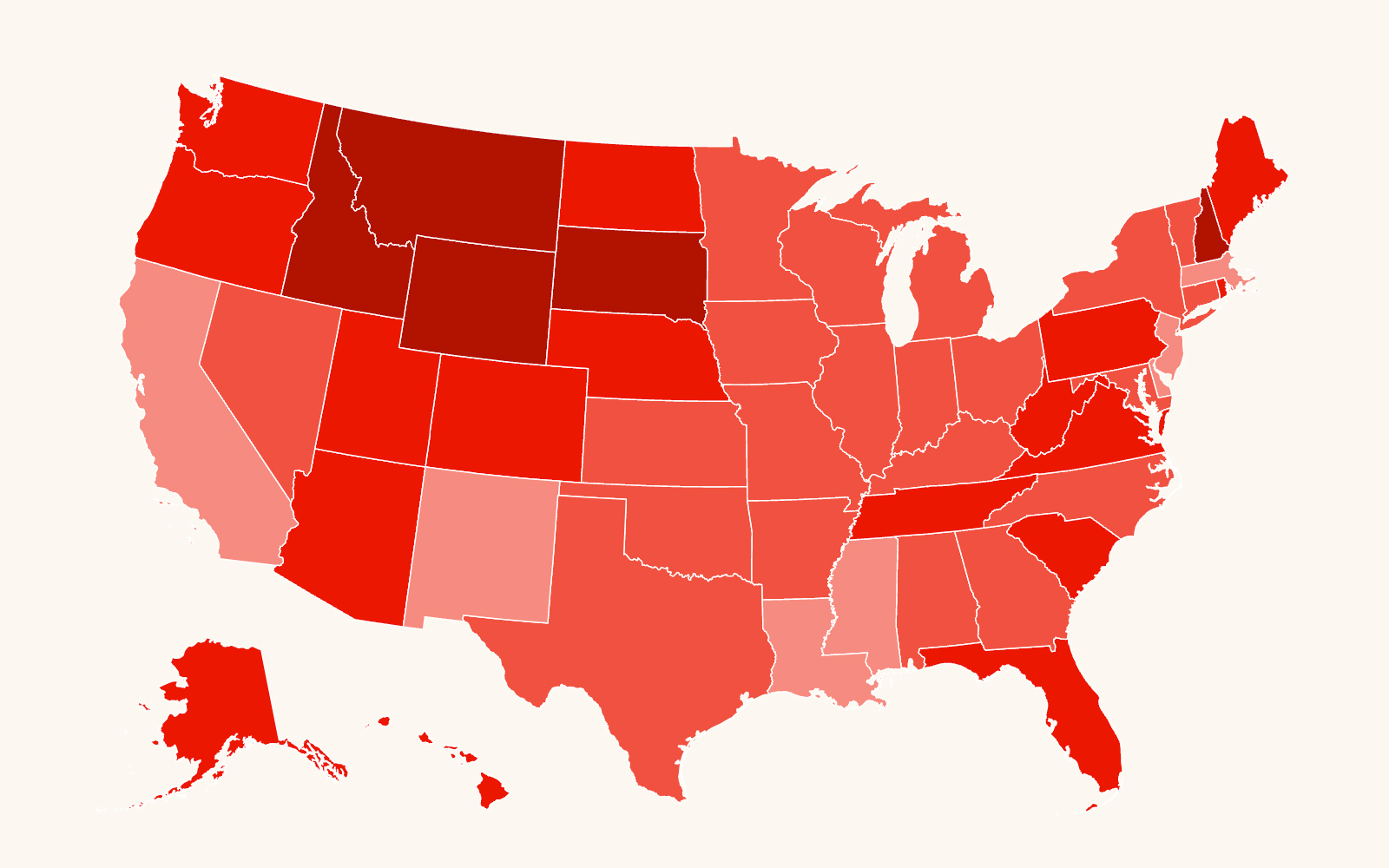Families across Alabama are working hard to stay afloat — paying more for everything from groceries to rent to health care. But the looming federal budget cuts will have an outsize effect on our state because federal funding is essential to supporting the basic needs of many Alabamians. Unfortunately, Alabama is home to some of the highest rates of poverty, child hunger, and housing insecurity in the country: 35% of the state is low-income (makes less than 200% of the federal poverty level), 22% of children face hunger (fifth in the nation), and 28% of adults are at risk of eviction.
Federal funding is critically important to ensure everyone has access to necessities like health care, food and nutrition, housing, and public education. In FY 2022, Alabama received approximately $18.7 billion, or approximately 43.1% of the state’s revenue. Federal funds account for 73% of the state’s Medicaid budget projected for 2026, 17.9% of the state’s budget for public education (in 2021-22), 100% of the benefits paid and 50% of the administration of SNAP, and 100% of housing assistance benefits.
Federal cuts would strip away health care coverage
Medicaid provides health care coverage for 1 in 5 Alabamans, allowing thousands of people access to lifesaving prescriptions, complex medical treatments, preventive services, long-term care and other essential health care. Protecting people with low incomes from high medical costs reduces the risks of being pushed further into poverty and builds healthier communities. Medicaid is a popular, inexpensive and comprehensive program that keeps families from falling deeper into poverty.
Alabama Medicaid facts
| # of people enrolled in Medicaid | 1,009,831 |
| % of AL population covered by Medicaid/CHIP | 21% |
| % of Medicaid paid for by the federal government | 73% |
| Children covered by Medicaid | 4 in 9 |
| % of births in FL covered by Medicaid | 45% |
| % of nonelderly Medicaid enrollees that are POC | 55% |
Federal cuts would take food and nutrition away from families
The Supplemental Nutrition Assistance Program (SNAP) is our nation’s most effective tool in the fight against hunger, reaching more than 752,200 children, older people, veterans and working parents in Alabama. The evidence is clear: SNAP reduces poverty and improves education, health and economic outcomes.
Alabama SNAP facts
| Average household receives | $262/month |
| Total $ received | $272 million |
| # of people helped by SNAP | 752,200 |
| % of population receiving SNAP | 15% |
| SNAP-authorized retailers at risk of losing revenue | 5,000 |
| Child hunger rate | 22.3% |
| % of SNAP participants who have children | 67% |
| % of families with older adults or disabled | 39% |
| % of people who do not have enough to eat | 16.1% |
Federal cuts would dismantle public education
Proposals to eliminate and defund the Department of Education will have devastating impacts on children of all races and ethnicities. Gutting federal education funding will make it impossible to abide by formula and competitive grants specified in law, evaporate existing data collection processes, and allow schools to ignore anti-discrimination requirements.
Alabama Education Facts
| # public school students | 750,923 |
| # of public schools in the state | 1,542 |
| # of Title I eligible schools | 949 (61.5%) |
| Fed $ in Title I funding | $303.4 million |
| % K-12 students receiving services under IDEA | 13% |
| Fed IDEA $ | $237.9 million |
| % education funds from the federal government (2021-22) | 17.9% |
| Fed $ per pupil received | $2,600 |
| $ AL spends per pupil in average daily attendance | $12,691 |
Federal cuts will push more families deeper into housing insecurity
More than half of this country spends more than 30% of their income on housing. Federal rental assistance is another lifeline to help seniors, people with disabilities, veterans, and working families keep a roof over their heads. Cutting these programs, as has been proposed in the past, would put millions at risk of losing their homes, and their futures.
Alabama Housing Stats
| # of people in AL who use federal rental assistance | 194,600 |
| Federal rental assistance $ provided to AL in 2023 | $694 million |
| % of adults not current in rent or eviction likely | 28.2% |
| # people displaced from home because of disasters | 104,364 |
Alabama will likely suffer a significant budget deficit with the hundreds of billions of proposed cuts to Medicaid, SNAP, public education, and other key programs. The sheer number of cuts required evitable means people will lose health insurance, have more trouble paying for food on the table and need to make hard decisions about whether to seek care or buy food, or pay rent.


